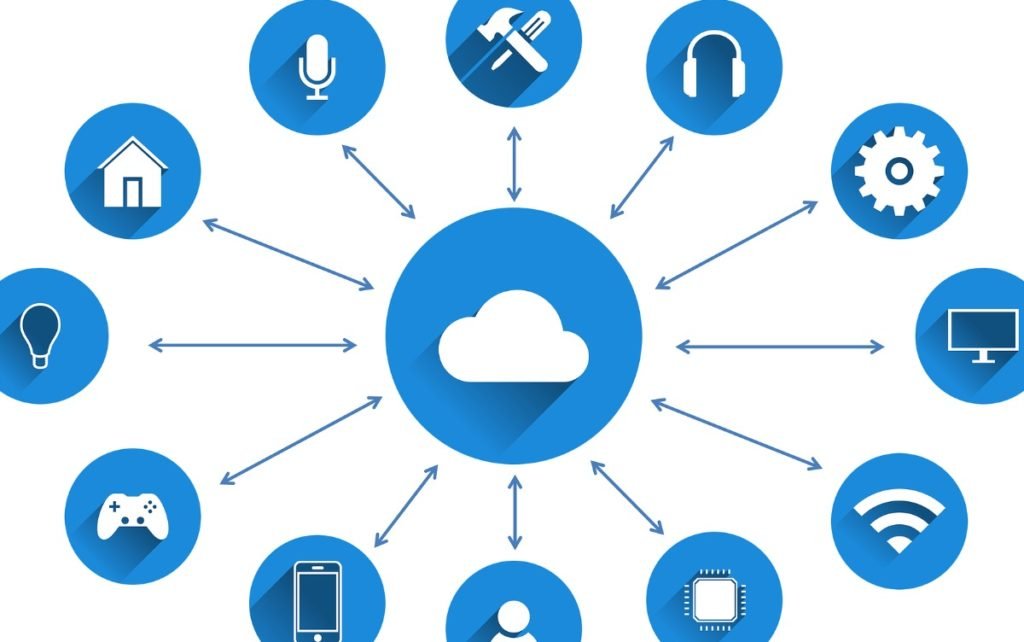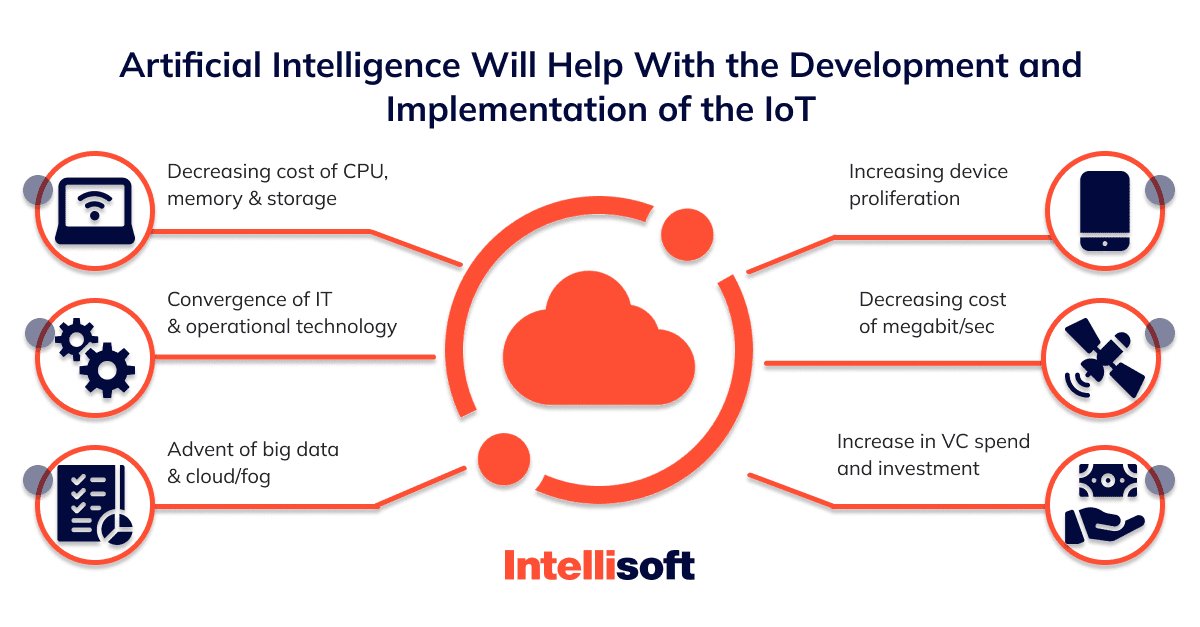The Evolution of IoT
The network of linked devices having sensors, software, and other technologies built in to share data with other devices and systems over the internet is known as the Internet of Things (IoT). This connectedness encompasses commonplace items like cars, refrigerators, thermostats, and even clothes, in addition to more conventional gadgets like computers and cellphones.
Early Beginnings
The concept of connected devices dates back to the early 1980s when university students modified a Coca-Cola vending machine to report its inventory status. This early example showcased the potential for machines to communicate their status without human intervention, laying the groundwork for what would become the IoT.
Technological Advancements
The rapid advancement in wireless communication, sensor technology, and data analytics has been crucial in the evolution of IoT. The introduction of IPv6, which allows for an almost limitless number of IP addresses, has also been a significant enabler for the expansion of IoT networks.
How IoT Works
Here are some important key components for how IOT works,,,
Devices and Sensors:
These are the physical objects that collect data. Examples include smart thermostats, wearable health monitors, and industrial sensors.
Connectivity:
The collected data is transmitted to a cloud infrastructure using various communication protocols such as Wi-Fi, Bluetooth, Zigbee, and cellular networks.
Data Processing:
Once the data reaches the cloud, it is processed using analytics software to extract meaningful insights.
User Interface:
The processed data is then made available to users through interfaces like mobile apps, websites, or control panels, allowing them to monitor and control the connected devices.
Applications of IoT
Here are some useful application for you,,,

Smart Homes
Smart home technology is one of the most recognizable applications of IoT. Devices like smart thermostats, lighting systems, security cameras, and appliances can be controlled remotely, offering convenience and energy efficiency. For instance, smart thermostats learn your schedule and adjust temperatures accordingly, reducing energy consumption and lowering utility bills.
Healthcare
In healthcare, IoT has led to significant advancements in patient care and monitoring. Wearable devices can track vital signs in real time, alerting healthcare providers to any anomalies. Remote patient monitoring can reduce the need for hospital visits, allowing for more personalized and continuous care.
Industrial IoT (IoT)
The industrial sector benefits from IoT through improved operational efficiency and predictive maintenance. Sensors on manufacturing equipment can monitor performance and predict failures before they occur, reducing downtime and maintenance costs. Additionally, IoT enables better inventory management and logistics through real-time tracking and automation.
Smart Cities
IoT plays a crucial role in the development of smart cities. Connected infrastructure can manage traffic flow, reduce energy consumption, and improve waste management. For example, smart traffic lights can adjust in real time to ease congestion, while smart grids optimize energy distribution based on demand.
Benefits of IoT
Some benefits of IOT,,,
Increased Efficiency
One of the primary benefits of IoT is increased efficiency. Automation of routine tasks reduces the need for human intervention, allowing resources to be allocated more effectively. For businesses, this translates to cost savings and improved productivity.
Enhanced Data Collection and Analysis
IoT devices generate vast amounts of data that can be analyzed to gain insights into patterns and trends. This data-driven approach enables more informed decision-making and can lead to innovative solutions to existing problems.
Improved Quality of Life
For individuals, IoT can enhance quality of life by providing convenience and improving health and safety. Smart home devices, for instance, can automate mundane tasks, while health monitoring devices can provide peace of mind and early warning of potential health issues.
Challenges and Concerns
Here are some challenges and concerns that you must be focused,,,
Security and Privacy
One of the major challenges facing IoT is ensuring the security and privacy of data. With so many connected devices, the potential for cyberattacks increases. Ensuring that devices are secure from hacking and that user data is protected is a critical concern.
Interoperability
The vast array of devices and communication protocols can lead to compatibility issues. Ensuring that different devices and systems can work together seamlessly is essential for the widespread adoption of IoT.
Scalability
As the number of connected devices grows, so does the need for scalable infrastructure. Managing and processing the data generated by billions of devices requires robust cloud solutions and data centers.
Future of IoT
Here are some future of IOT,,,

5G and Beyond
The rollout of 5G networks is expected to significantly enhance IoT capabilities. With faster data transfer speeds and lower latency, 5G will enable more devices to connect and communicate in real time. This will open up new possibilities for applications such as autonomous vehicles and advanced robotics.
Artificial Intelligence and Machine Learning
Integrating artificial intelligence (AI) and machine learning (ML) with IoT will further enhance its potential. AI can analyze the vast amounts of data generated by IoT devices, providing predictive insights and enabling more sophisticated automation.
Edge Computing
Edge computing, which involves processing data closer to where it is generated rather than in a centralized cloud, will become increasingly important. This approach reduces latency and bandwidth usage, making IoT systems more efficient and responsive.
IoT in Everyday Life
Here are some daily bases and basics use of Internet in our life,,
Smart Wearables
Wearable technology, such as smartwatches and fitness trackers, is becoming increasingly popular. These devices monitor physical activity, heart rate, and other health metrics, providing users with valuable insights into their health and fitness levels.
Connected Vehicles
The automotive industry is embracing IoT with the development of connected vehicles. These vehicles can communicate with each other and with infrastructure such as traffic lights and road sensors, improving safety and efficiency. Features like real-time traffic updates and predictive maintenance alerts are becoming standard in modern vehicles.
Home Automation
Home automation systems allow users to control various aspects of their home environment through a single interface. From adjusting lighting and temperature to monitoring security cameras and controlling appliances, home automation provides convenience and energy savings.
The Economic Impact of IoT
Here some economic impact of IOT,,,

Market Growth
The IoT market is experiencing rapid growth, with estimates suggesting it could reach trillions of dollars in the coming years. This growth is driven by the increasing adoption of IoT technologies across various industries and the continuous development of new applications.
Job Creation
The expansion of IoT is also leading to job creation in areas such as IoT development, cybersecurity, data analysis, and network management. As businesses invest in IoT solutions, the demand for skilled professionals in these fields will continue to rise.
Conclusion
The Internet of Things, which provides previously unheard-of levels of automation and connectedness, is completely changing the way we work and live. The Internet of Things has enormous potential benefits, notwithstanding certain obstacles to be addressed. IoT is one of the most revolutionary technologies of our time, and its influence on our daily lives and the global economy will only increase as technology develops.



